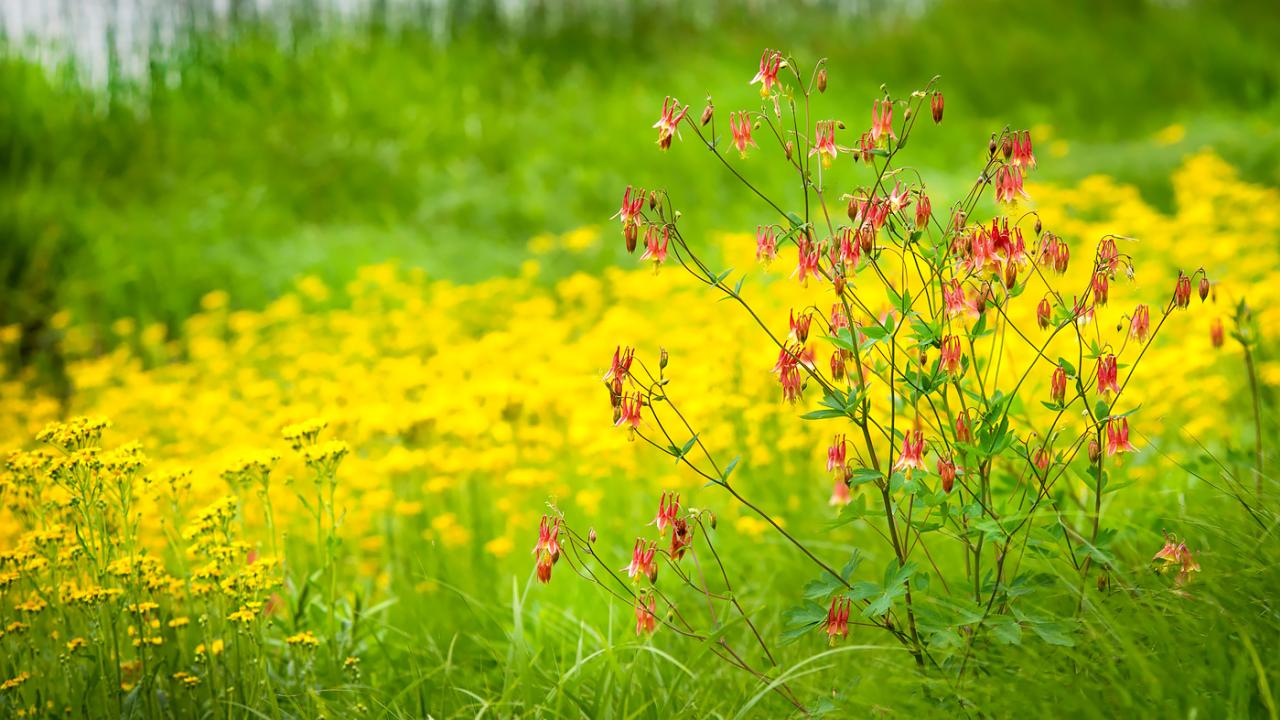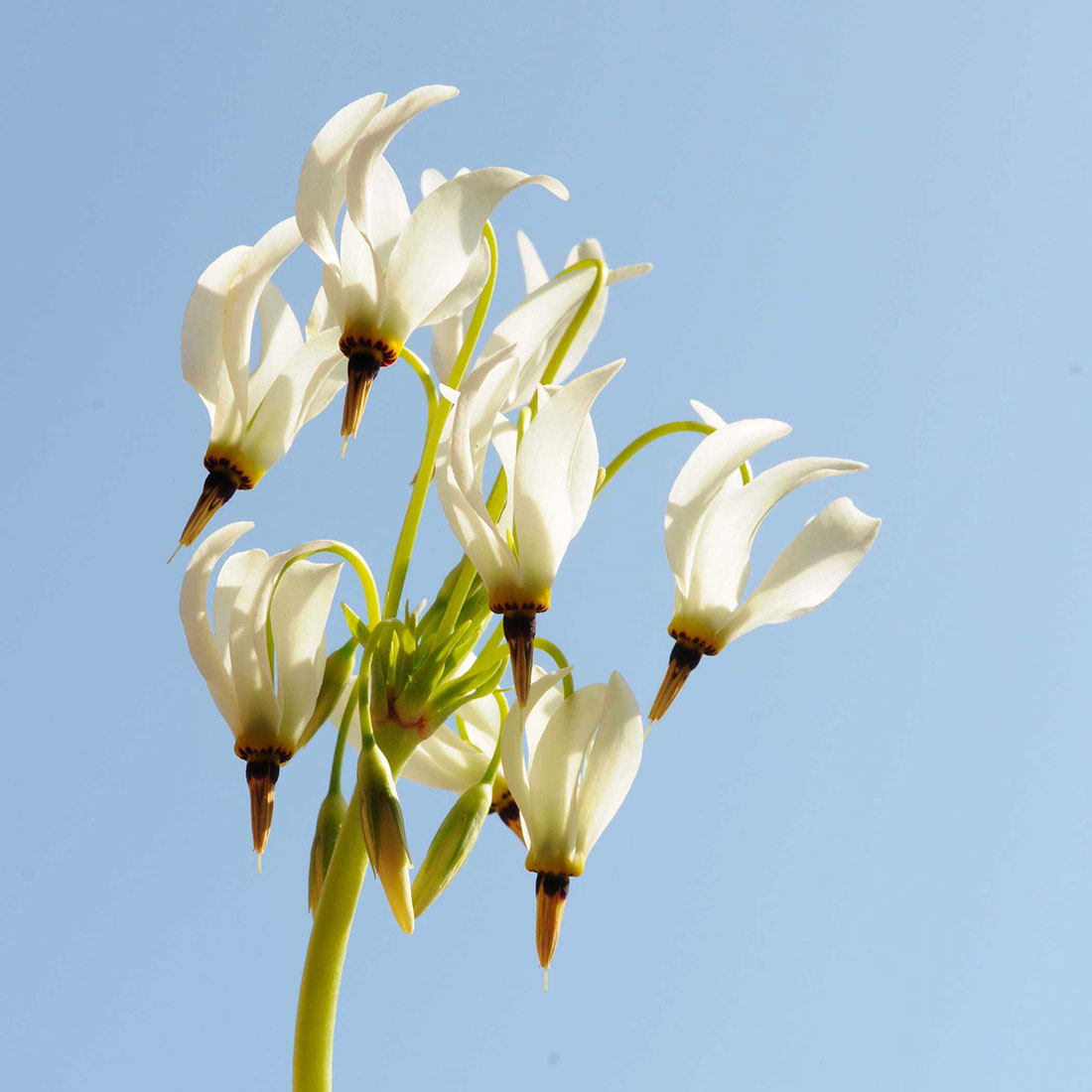

Plant Science &
Conservation
Garden Stories
Pondering the Prairie
There are some remarkable prairie plants in the Midwest. Here at the Chicago Botanic Garden, the Dixon Prairie boasts more than 250 species of native plants. You don’t have to go far to find plants that have something interesting or unique about their life story. Something that might help you remember them when you happen upon them in a local natural area. Something other than a pretty face.
Dodecatheon meadia: A Must-see of the Prairie

Question: Which one of these is NOT a common name for this handsome spring ephemeral?
- Shooting star
- Prairie pointer
- Prairie primrose
- Roosterheads
- Pride of Ohio
Answer:
- Shooting star is the most common name for this species, at least in the Midwest. The plant’s myriad arching flower stalks sporting shooting stars falling to the earth make this a good common name.
- Prairie pointer was the common name used by prairie pioneers. The combination of the reflexed petals, narrowing to a column of fused yellow anthers with a needle-like style protruding from the central core of the anthers creates a perfect pointer.
- Prairie primrose is not a common name, but one that I created. Not very colorful, but this could very easily be a name for this species, since it commonly occurs in prairies and is a member of the primrose family.
- Roosterheads is comical but descriptive. With a white feathered head on an arching neck with a yellow beak, the plant’s resemblance to the animal is easy to see if you subtract the red comb and wattle.
- Pride of Ohio is puzzling. Dodecatheon meadia is not the state flower of Ohio—that’s white trillium. Perhaps it has something to do with the fact that Ohio falls near the center of the geographical range of the species. There are some prairies in Ohio, but not many. Nevertheless , it could be common in Ohio, since this species is at home in open woodlands as well as prairies. And it is, in fact, one of the common names for Dodecatheon meadia.
Dodecatheon meadia—or shooting star—is a spring-blooming plant of moist prairies and open woodlands. They bloom in late April through May and grow to about 1 foot. The flowers have been described fairly accurately in the common name quiz above. One thing that the common names don’t reflect about the flower is that the flower color can vary widely from pure white to a rich magenta. A population with a range of these color gradients can be a wonderful scene to behold. The rest of the plant consists of a leafless stalk with a rosette of smooth oval leaves.
Shooting stars are among the few spring ephemerals that occur in prairies. Most ephemeral spring wildflowers, such as trillium, bloodroot, trout lily, and spring beauty, are denizens of the woodland. In the woodland, their classic life story is one that takes advantage of the sun's energy that reaches the forest floor before the leafy canopy above emerges. They grow, flower, and fruit during this brief period of intense sunlight. The woodland ephemerals then continue their life underground in various energy-storing structures such as bulbs, corms, or rhizomes until they emerge again the following spring. In a prairie environment, shooting stars do not contend with the shade of leaf-bearing trees but instead with the advancing growth of the much taller herbaceous grasses and forbs in late summer. Additional competition for water and nutrients may also be an advantage of retreating underground later in the year.
Another feature of this pretty little wildflower that you can look for when you’re visiting your local prairie this spring is its interesting pollination event. The pollen in those tightly fused yellow stamens (male flower part) is held securely within the anthers (pollen-producing structure of the stamen) except for a small pore at the tip. Unlike many flowers that allow easy access to their pollen, shooting stars require the industry of bumblebees and other pollinators to extract the pollen from their anthers. An action called sonication is required for bumblebees—the queen bee in particular—to extract the pollen. Vibrations from a bumblebee’s thoracic muscles create a buzzing sound similar to the familiar sound of their rapid wing beats but at a slightly different pitch. These vibrations, which the bees deliver with great precision, cause the pollen to be released through the pores of the anthers onto the bee’s abdomen. As the bumblebee travels from flower to flower, the pollen on its abdomen from previous visits comes in contact with the stigma at the tip of the needle-like style that protrudes through the center of the column of anthers. Hence, cross-pollination. This efficient distribution of pollen is called buzz pollination and can be found in other plants where bumblebees are plentiful.

